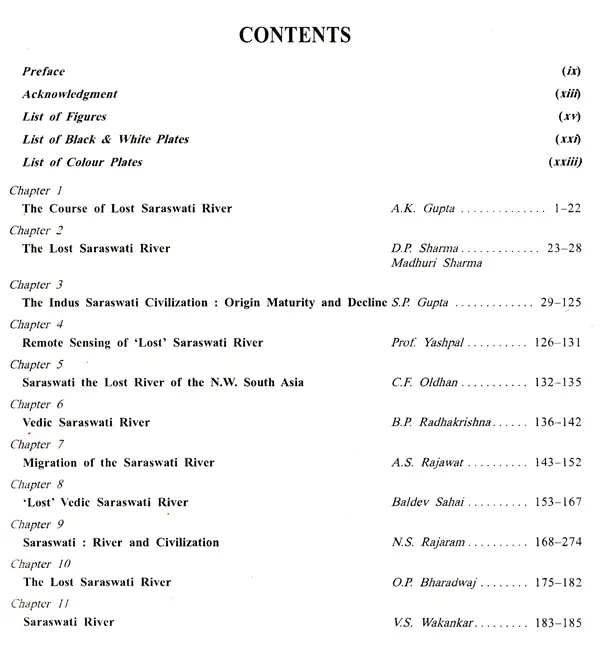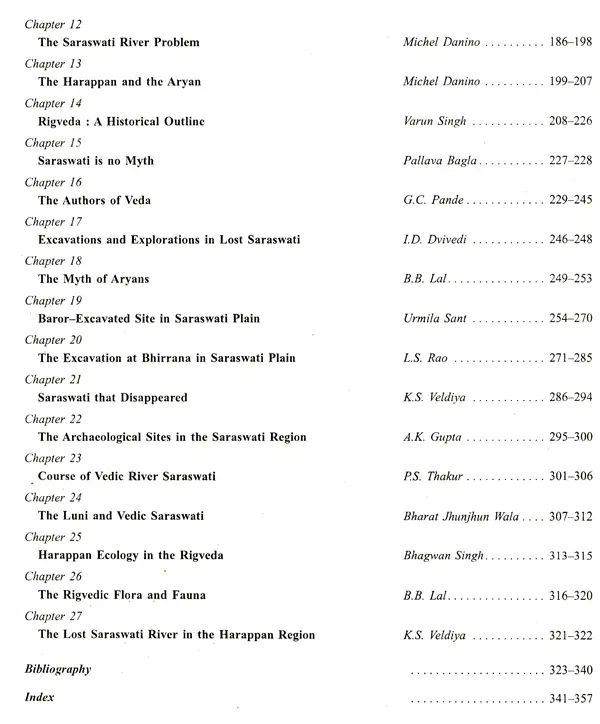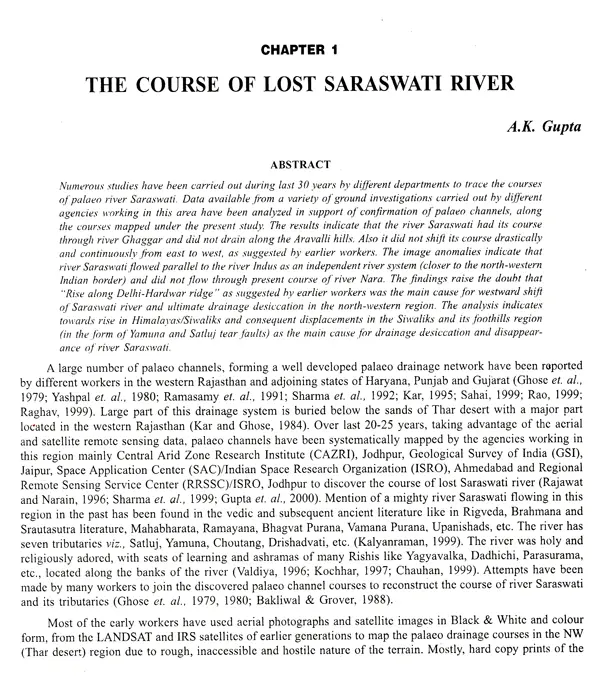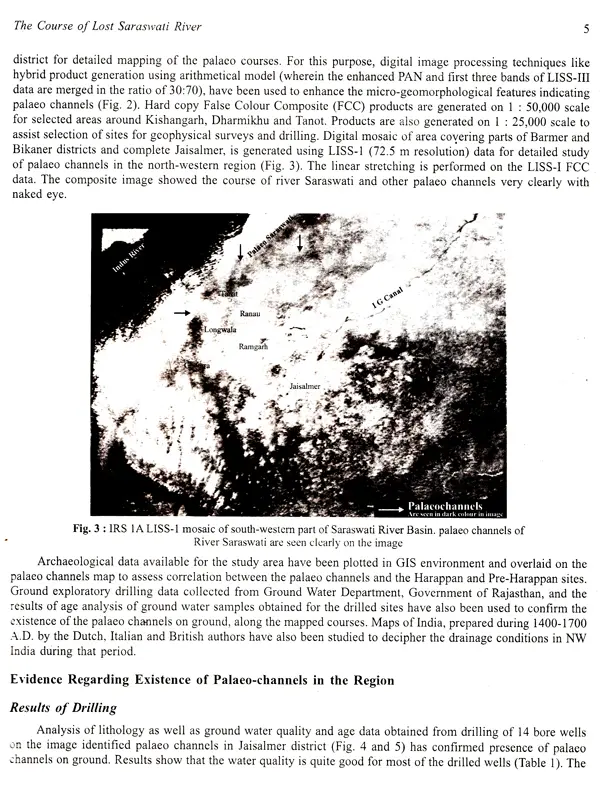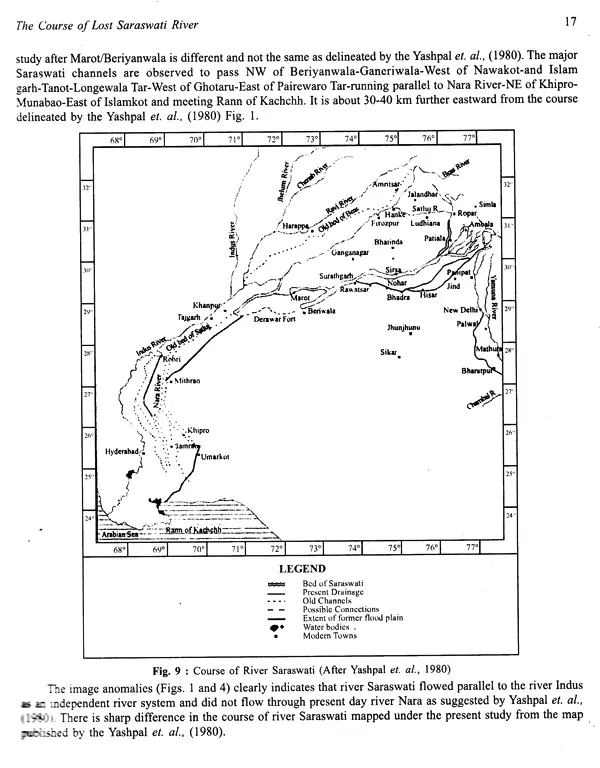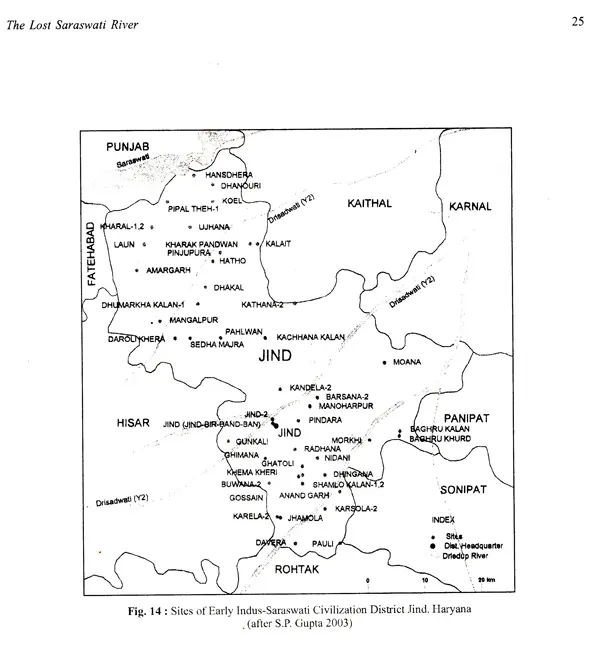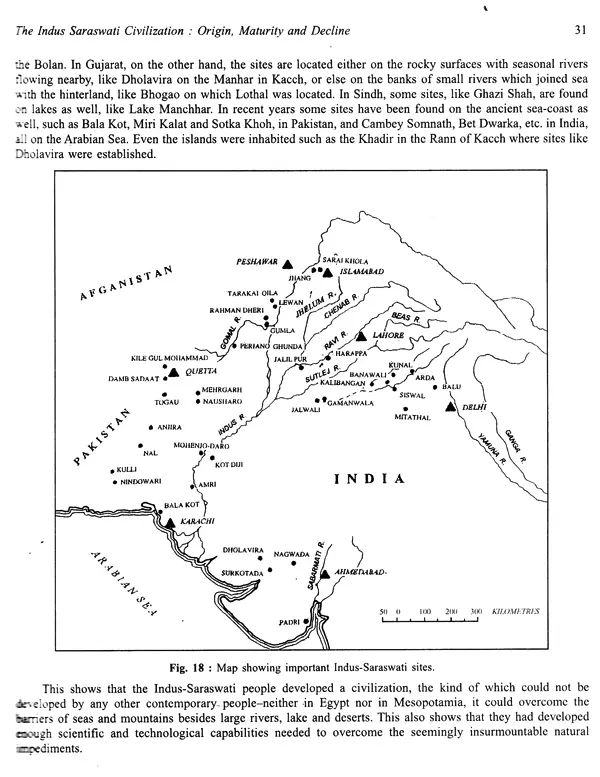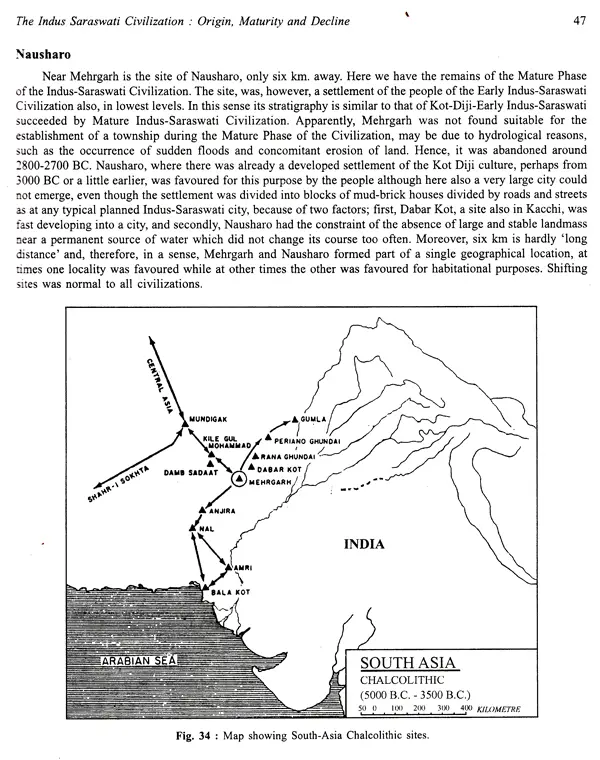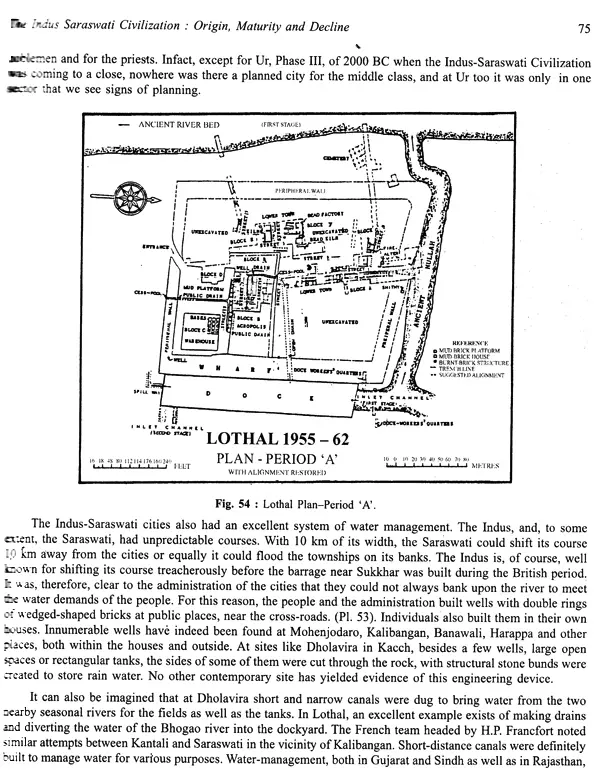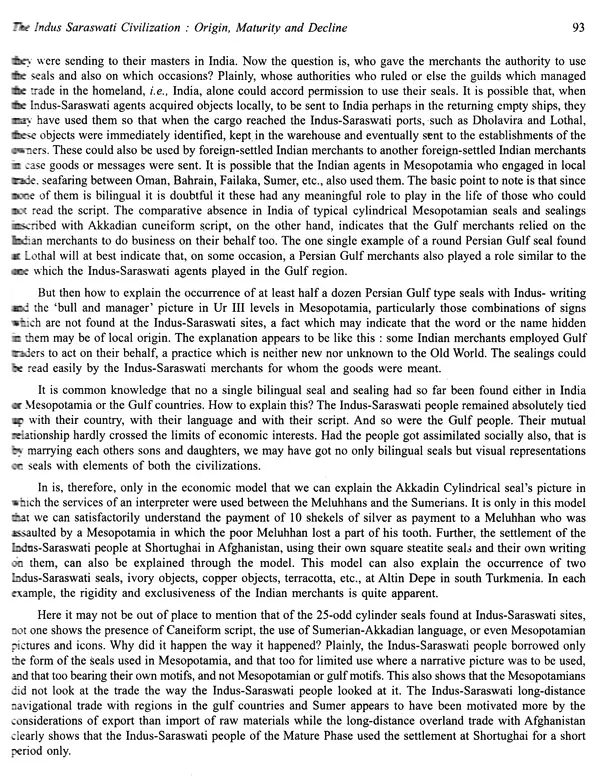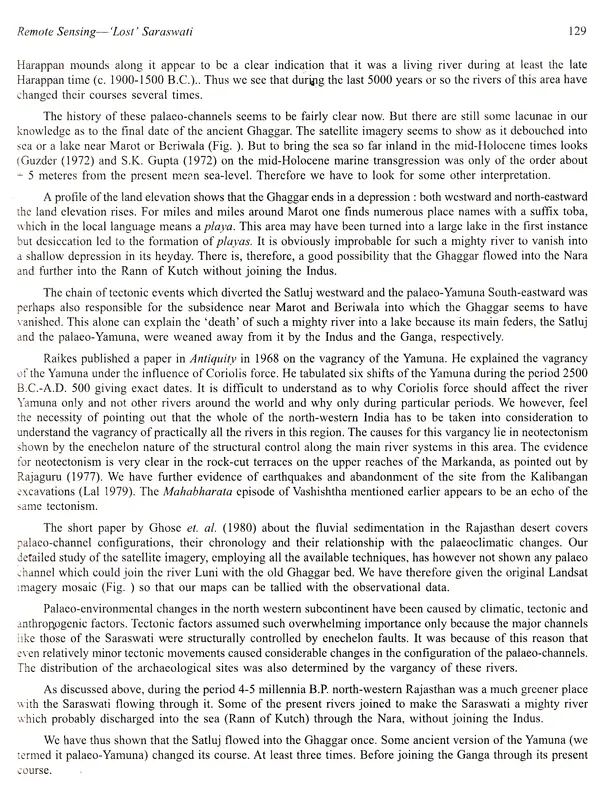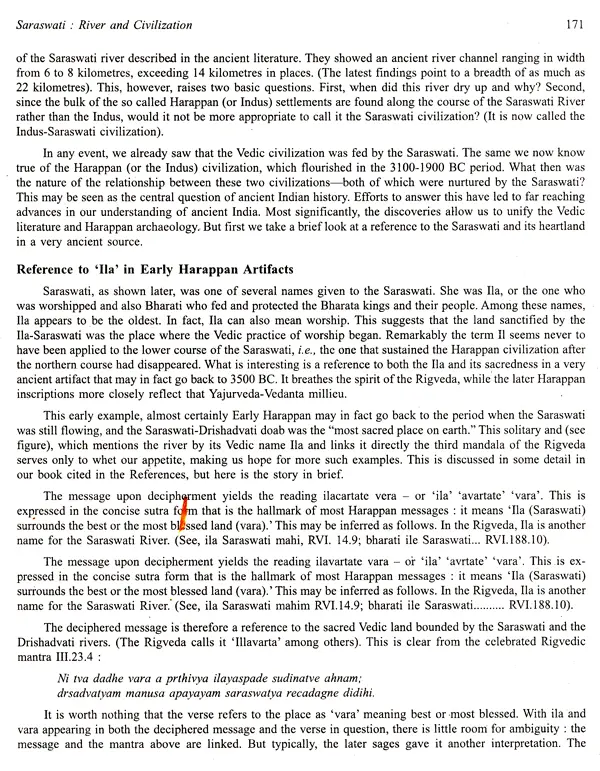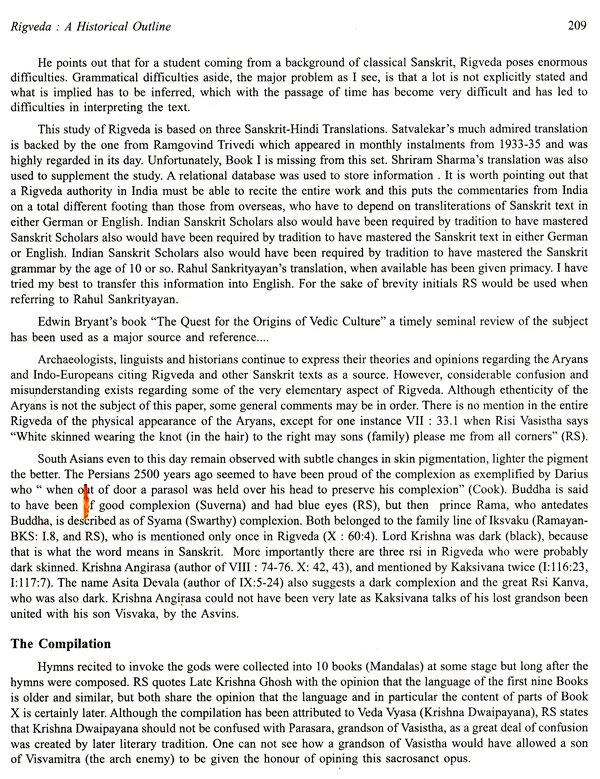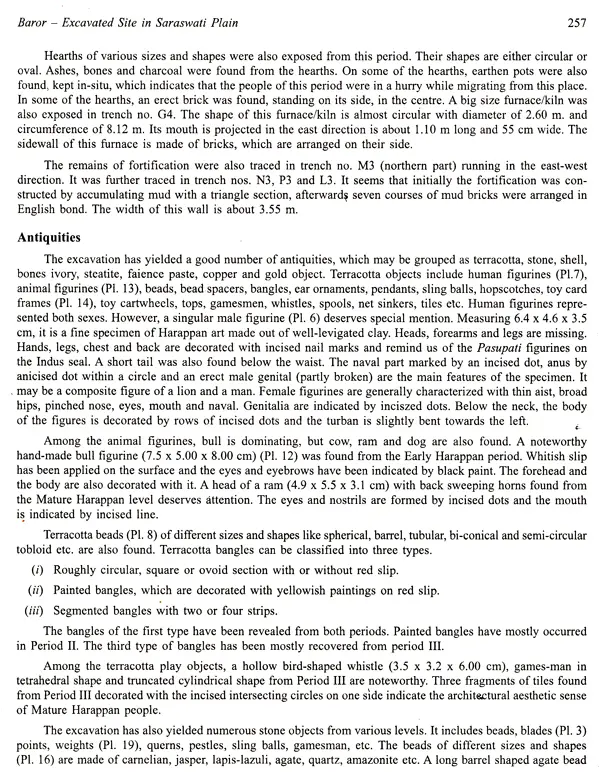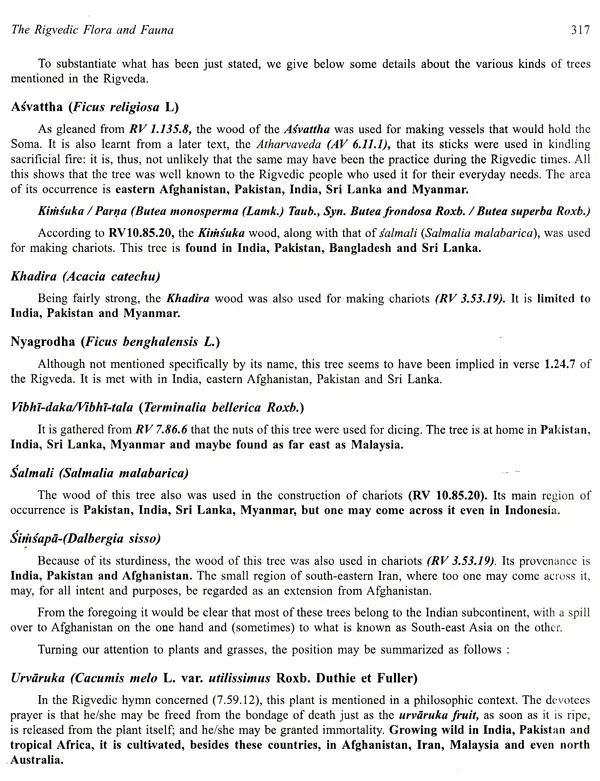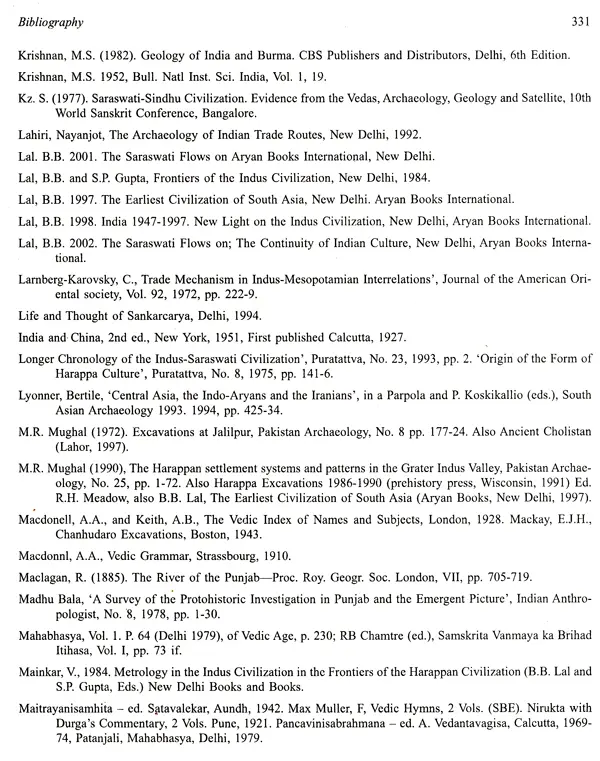
The Lost Saraswati Civilization
Book Specification
| Item Code: | UAN478 |
| Author: | Deo Prakash Sharma & Madhuri Sharma & Kadambini Pandey |
| Publisher: | Bharatiya Kala Prakashan |
| Language: | English |
| Edition: | 2008 |
| ISBN: | 9788180901898 |
| Pages: | 384 |
| Cover: | HARDCOVER |
| Other Details | 11.00 X 9.00 inch |
| Weight | 1.56 kg |
Book Description
**Contents and Sample Pages**
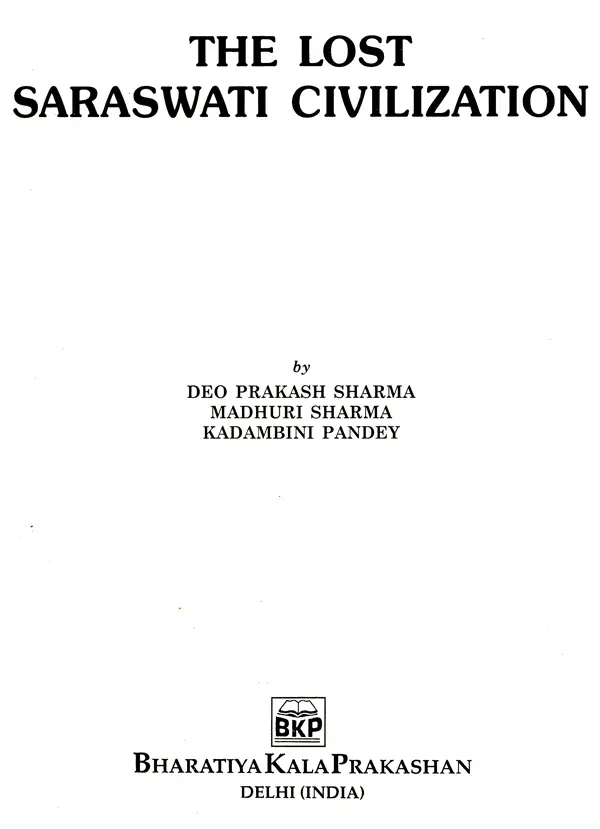
He has published 200 papers and 24 books, a few of which are Harappan Terracottas; Harappan Seals; Indus Script on its way to Decipherment; Panorama of Harappan Civilization; Bharat Evam Sindhu Sabhyata (in Hindi) Harappan Art Glimpses of Harappan Archaeology and copper hoard. He is editor of Encyclopedia of Architecture Vol. I, II, III, IV, and Early Classical Art of South Asia.
He was Head of the Harappan Collection and Association Professor, National Museum, New Delhi. At present he is Director Bharat Kala Bhavan Museum, B.H.U., Varanasi, India.
Madhuri Sharma is an Art Historian, Museolgist and Archaeologist. She participated in excavation work in Narmada Valley, Chopani Mando, Belan Valley and Bharadwaj-Ashram. Apart from participation in national and international seminars, she has published 60 research papers and 8 books including 'Museum and Museology', 'Early Buddhist Metal Images of South Asia'. Early Harappan and Indus Saraswati Civilization and Bharat Ka Purattava. She is senior fellow under Government of India.
Kadambini Pandey is urban planner and architect. She is at present a teacher planning in York University, Canada. She has published 3 books including Harappan Architecture and Planning.
This volume includes 27 research papers. The Chapter 1 is on the course of Just Saraswati river by A.K. Gupta who has observed that river Saraswati flowed parallel to the river indus as independent siver system and did not flow through the present course of river Nara. The remote sensing analysis indicated towards the re in Siwalik and consequent displacement in the Siwaliks and its foothill region (in the form of Yamuna and Satluj near Amhala) as the main cause for drainage desiccation and disappearance of river Saraswati The true colour composite images show palaeo-drainage in Saraswati basin and thick channels represent the course of lost Saraswati, Clear photo of Saraswati palaco-channels on the satellite imagery in the form of a strong and powerful continuous drainage system in the NW region and occurrence of archacological sites of Early Harappan beyonu doubt indicate the existence of a mighty palaeo drainage system of Vedic Saraswati river in this region. The 11 paper of D.P Sharma is on lost Saraswati river. Rigvedic Saraswati, now dry Saraswati, was flowing from south of Siwalik via Himachal Pradesh, through Haryana, Punjab, North Rajasthan, Cholistan and South Gujarat and finally it was joining Arabian Sea near Desalpur Ancient Saraswati was 1500 km long and between 3 to 20 km width.
The IIIrd Paper of S.P. Gupta is on the Indus Saraswati civilization. This includes origin and development, of cultures since 8000 B.C. to 2000 BC at sites like Mehrgarh Kuli Gal Mohammad, Nausharo, Rehman-Dhers, Amri, Balakot, Ghazi Shah, Kunal, Ravi phase of Harappa Hakra. Jalilpur, Kot Diji, Kalibangan, Banawali, Rakhigarhi, Shahi Tump all pre-Early Harappan and Early Harappan sites. Mobenjodaro, Kalibangan, Harappa, Lothal, Dholavira, etc. are all mature Harappan sites. Indus Saraswati civilization was having long distance trade with west and central Asia Horse was domesticated by those people. Gupta confirmed Indus Saraswati and Rgvedic cultures were same, Aryan never invaded on Indus Saraswati cities R.S Bisht observed water manage ment and conservation planning during mature Harappan period was superb. They were familiar with dams, reservoirs, water chutes and its underground drainage network of mature. S.P. Gupta dated Early phase of Indus Saraswati civilization between c. 3500-2800 BC. and he gave hist of C 14 dates of Harappan sites.
The IV paper of Yashpal is on remote sensing of the lost Saraswati River Area between Indus and its tributaries in west and Ganga aud its tributaries in East has been the cradle of ancient city and civilization. Lack of water in Saraswati was one of the cause of decay of this civilization. Saraswati was largest river during Rigvedic, Early Harappan, Mature Harappan and even early than c. 3500 B.C. Rgveda mentioned about Saraswati (Saraswati) river and record was compiled in second millennium B.C. and event of Rgveda could go upto C. 3500-2800 BC. We have palaco-channels of lost Saraswati.
